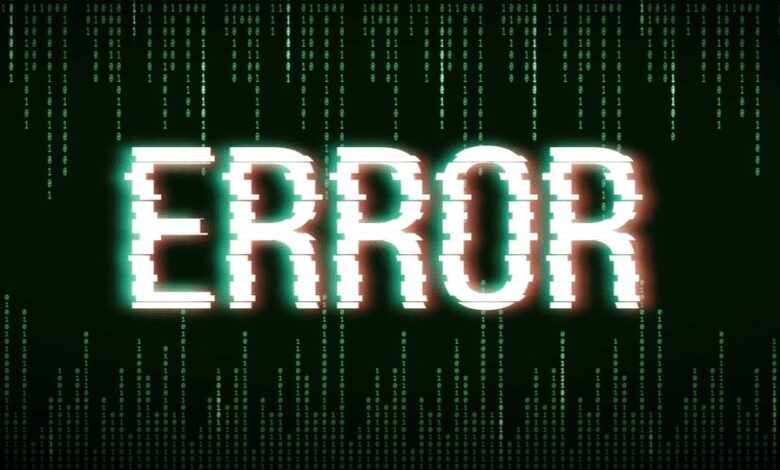How to Decode and Resolve the Error Message errordomain=nscocoaerrordomain&errormessage=could not find the specified shortcut.&errorcode=4

Introduction
Welcome to a guide on deciphering the perplexing error message errordomain=nscocoaerrordomain&errormessage=could not find the specified shortcut.&errorcode=4. If you’ve encountered this cryptic message while developing or using Apple software, fret not! In this article, we’ll break down each component of this error code, demystify its meaning, and equip you with troubleshooting steps to resolve it efficiently.
Understanding the Error Message
The error message in question might seem like a jumble of technical jargon at first glance. However, each part holds crucial information that can lead us to the root cause of the issue.
What is errordomain=nscocoaerrordomain?
Let’s start with errordomain=nscocoaerrordomain. In Apple’s ecosystem, the term “error domain” refers to the category or source of the error. In this case, nscocoaerrordomain indicates that the error originates from Cocoa, Apple’s framework for developing applications on macOS and iOS.
Breaking Down errormessage=could not find the specified shortcut.
The next segment, errormessage=could not find the specified shortcut., provides a descriptive explanation of the encountered problem. It suggests that the system failed to locate a specific shortcut, leading to the error.
Deciphering errorcode=4
Lastly, errorcode=4 denotes the specific error code associated with this issue. Error codes serve as identifiers for different types of errors, aiding developers in diagnosing and resolving problems efficiently. In this case, error code 4 points to a particular issue related to shortcut management.
Common Scenarios Leading to this Error
Understanding the context in which this error occurs can provide valuable insights into its resolution. Several scenarios may trigger this error message:
- Deletion or Renaming of Shortcuts: If a shortcut referenced by an application is deleted or renamed, the system may fail to locate it, resulting in this error.
- Incorrect Configuration: Misconfigurations in the application’s code or settings related to shortcut handling can also lead to this error.
- Compatibility Issues: Changes in system settings, updates, or compatibility issues between different software components can cause disruptions in shortcut functionality.
Troubleshooting Steps
Now that we’ve dissected the error message, let’s dive into troubleshooting steps to resolve it effectively.
Checking for Shortcut Existence
Start by verifying the existence and status of the specified shortcut. Ensure that it is correctly configured and accessible within the system.
Verifying Error Code
Double-check the error code (in this case, 4) against official documentation or developer resources to gain deeper insights into its implications and potential solutions.
Solutions for Different Platforms
The resolution process may vary depending on the platform where the error occurs. Let’s explore solutions tailored to iOS and macOS environments.
iOS
For iOS users and developers, resolving this error may involve checking the application’s permissions, updating to the latest version of iOS, or reinstalling the affected application.
macOS
On macOS, troubleshooting steps may include verifying permissions, resetting system preferences related to shortcuts, or reinstalling the application to ensure proper integration with the operating system.
Conclusion
In conclusion, encountering the error message errordomain=nscocoaerrordomain&errormessage=could not find the specified shortcut.&errorcode=4 can be perplexing, but armed with the knowledge provided in this guide, you’re well-equipped to tackle it head-on. By understanding the components of the error message and following the recommended troubleshooting steps, you can swiftly resolve the issue and get back to smooth operation on your Apple devices.
FAQs
- What is the significance of the error domain in Apple’s error messages?
The error domain indicates the source or category of the error, providing valuable context for troubleshooting and resolution.
- How can I determine the error code associated with a specific error message?
You can typically find the error code within the error message itself or by referring to official documentation and developer resources provided by Apple.
- Are there any common pitfalls to avoid when troubleshooting this error?
When troubleshooting this error, ensure thorough checking of permissions, configurations, and compatibility factors to avoid overlooking potential causes.
- Can third-party applications cause this error message to appear?
Yes, third-party applications interacting with system shortcuts or configurations can potentially trigger this error message if not properly integrated or configured.
- If I encounter this error persistently, should I contact Apple Support?
If you’ve exhausted all troubleshooting steps and the error persists, reaching out to Apple Support or seeking assistance from developer forums may provide additional insights and solutions.




